I was tooling around Twitter the other day, (I refuse to call it X), and noted this tweet about Miracleman:
https://twitter.com/MrBitterwitter/status/1785742592203747368
which commented on the long-awaited appearance of the collected Miracleman by Neil Gaiman and Mark Buckingham, and wondered why more people weren’t excited about this.
From the promo copy:
“The wait is over! Decades in the making, Neil Gaiman (Sandman) and Mark Buckingham’s (Fables) MIRACLEMAN continues the groundbreaking saga touted as the greatest super-hero story of all time! In THE SILVER AGE, Miracleman has created a utopia on Earth where gods walk among men and men have become gods. But when his long-dead friend Young Miracleman is resurrected, Miracleman finds that not everyone is ready for his brave new world! The story that ensues fractures the Miracleman family and sends Young Miracleman on a stirring quest to understand this world – and himself. It’s a touching exploration of the hero’s journey that ranges from the top of the Himalayas to the realm of the towering Black Warpsmiths – and into the secret past of the Miracleman family! Collecting MIRACLEMAN BY GAIMAN & BUCKINGHAM: THE SILVER AGE #1-7 and material from MIRACLEMAN BY GAIMAN & BUCKINGHAM #1-6.”
Ah, Miracleman. Formerly known as Marvelman, created by Mick Anglo in 1954 then revamped by Alan Moore, Gary Leach and Alan Davis in 1982, in a dystopian tale that would ignite Moore’s career. The series came out in the US from Eclipse Comics, retitled Miracleman to avoid conflicts with Marvel, until Moore ended his run and handed the book over to Neil Gaiman and Mark Buckingham, who worked on it for a while until…bankruptcies and legal problem after legal problem. So many problems and mysteries that The Beat serialized a very lengthy examination of the matter by Pádraig Ó Méalóid that ran for more than 14 parts! Although you can find bits of it on the internet, I’d recommend the collection edition, a fetching paperback available on Lulu entitled Poisoned Chalice: The Extremely Long and Incredibly Complex Story of Marvelman (and Miracleman).
Although I edited the series of articles, it ran 15 years ago, and my memory of the many twists and turns has dimmed a bit, but it involved not only Moore but Gaiman, Todd McFarlane and Marvel, a very graphic childbirth scene, and many long ago comics companies that no longer exists but left behind confusing rights issues. A very short version is that McFarlane broughts the rights to Eclipse Comics when they went bankrupt, and since he was involved in a lawsuit with Gaiman, the Miracleman rights were in limbo due to all the conflicts.
The main thing though is that through all this, Gaiman’s story was never finished, his proposed trilogy of “The Golden Age,” “The Silver Age,” and “The Dark Age” ending after the Golden Age. (If you want a shorter version of all this, the Wikipedia page is just too darned long. But Encyclopedia Britannica, of all things, has a more concise write-up.)
Gaiman moved on to many more award winning and popular projects. Him being one of the most successful and beloved authors of the last fifty years and all. But hardly a month went by in the Discourse of the Aughts that someone didn’t ask, “What about Miracleman? When will we see the ending?” Gaiman had written at least one unproduced script and had the storyline worked out when it all came tumbling down so this wasn’t even a non-existent storyline, but a bunch of pages in someone’s drawer.
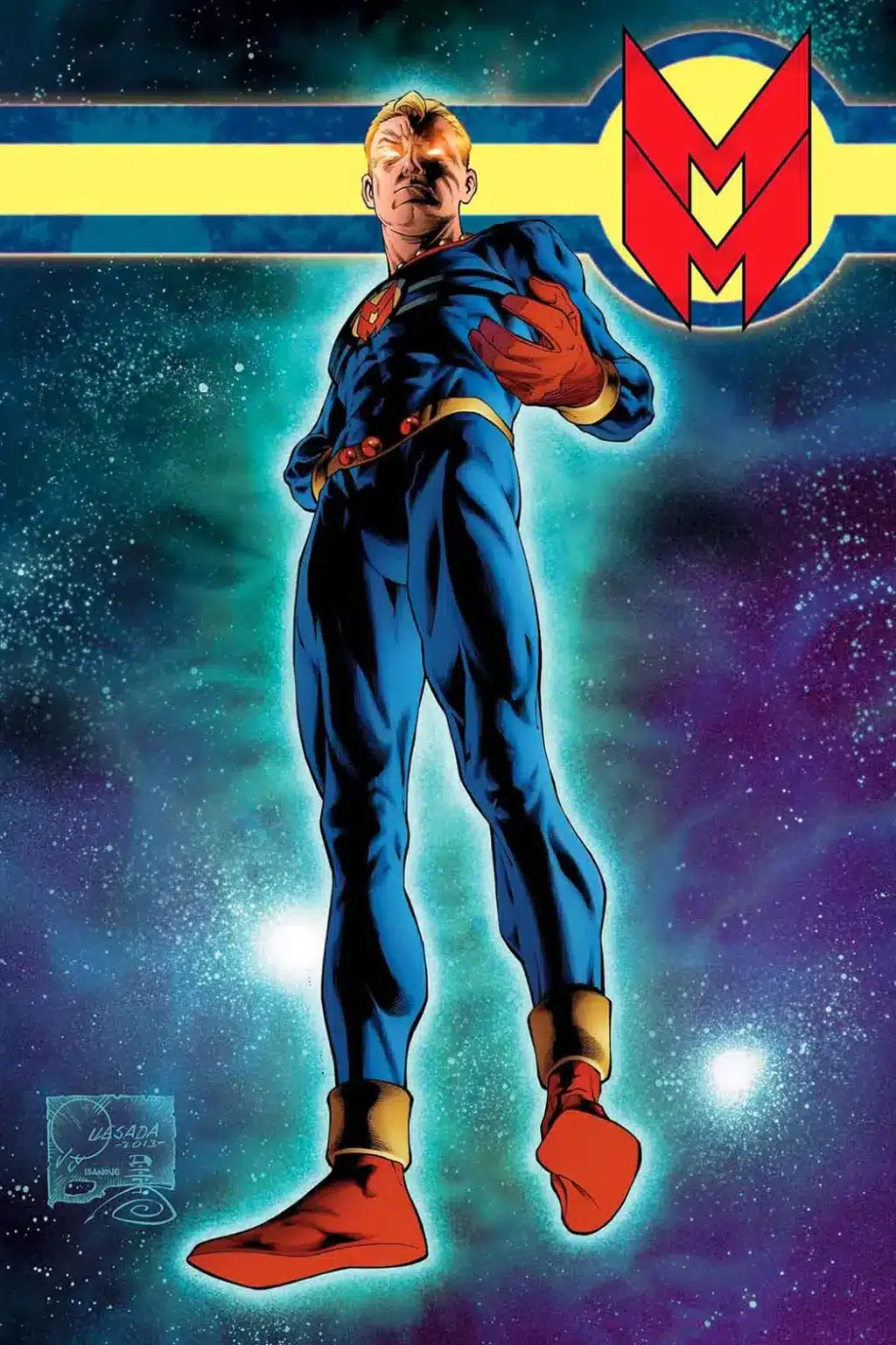
Unavailability drives interest, and there was so much interest in this lost masterpiece that running a 14 part series on it made sense for a comic book website, at last it did in the Aughts. And at long last, at NYCC 2013, Marvel announced that they were bringing back Miracleman! It was one of the biggest stories of the show.
“The wait is over,” says Editor In Chief Axel Alonso. “Marvel will finally be bringing these timeless, ground-breaking stories to a whole new generation of reader.”
“We’ve been working with the Miracleman artists to obtain original artwork or photostats in every instance possible, and then applying the same painstaking restoration methods and rigorous quality standards that are utilized on the Marvel Masterworks line. The Marvel Special Projects team have even been developing some new techniques specifically for this project. These Miracleman issues will receive the most advanced restoration possible to ensure the most authentic reading experience,” says SVP of Marvel Publishing David Gabriel. “The art is crisp, clear, and looks as good – if not better than the day it was published! Also, the stories are being completely relettered to meet today’s standards.”
Gaiman was onboard with the return….and the long lost issue would finally see the light of day.
“The tragedy of Miracleman was that we published two issues, wrote three and a half – and then it all stopped,” Gaiman said, in an interview with Marvel.com. “And Miracleman #25 has been sitting in the darkness – nobody has seen it. It was drawn, it was written, it was lettered over 20 years ago.”
“I love the idea that I will get to finish this story,” added Gaiman.
Marvel began a series of reprints of all the previous material (with Moore credited, as he requested, as “The Original Author.”) It was assumed that Marvel would publish the rest of the story that Gaiman and Bucky had planned but then….delays and more delays. And finally, in 2022, it was announced there would be NEW Miracleman at long last.
The wait is over! Neil Gaiman and Mark Buckingham present the story comic fans have waited decades for: the first ALL-NEW chapter of MIRACLEMAN: THE SILVER AGE! Young Miracleman is back from the dead and adapting to a strange new world, and this poignant and relevant super hero epic represents the next chapter in Miracleman’s monumental legacy.
“This script was written 30 years ago and has never been seen until now. It feels so liberating to be able to bring people new Miracleman for the first time in three decades,” Gaiman said.
“We’re back! And after thirty years away it is both thrilling and terrifying,” Buckingham said. “Neil and I have had these stories in our heads since 1989, so it is amazing to finally be on the verge of sharing them with our readers.”
So many waits that were over in this tale! And then….well, seven issues came out over a two year period and I guess the momentum was lost. But finally we have the collection and what really is one of the most historically significant comics stories ever is landing….very quietly.
Back in 2022, Marvel said “Pick up the most anticipated issue in comic book history when MIRACLEMAN BY GAIMAN & BUCKINGHAM: THE SILVER AGE #3 graces stands on December 28” and although the hype is at a level Stan Lee would approve of, based on the continued interest over the years, “most anticipated” isn’t that much of a reach.
So what happened?
One thing is that…tastes change. In 1982 dystopian superheroes who take over the world was a radical new approach. In 2024, that’s Tuesday, or whenever the new season of The Boys comes out. (The Boys and other similar takes definitely share Marvelman DNA though.)
Also, as we note here often, periodical comics readers are a dying breed. Fans who read the Eclipse original in the 80s are now….well you can do the math. Some of them are past retirement age.
Delays definitely hurt, and then there’s just so MUCH of everything now. It’s hard to imagine anything becoming such a center of attention in these fractured days the way Miracleman was for years.
As Twitter users pointed out, part of the Miracleman mystique was just its unavailability. There are lots of things that people yearn for when they can’t get them…..but when it becomes easily available, the romance is gone. (Flex Mentallo?)
So yeah, it’s easy to see why the allure of Miracleman faded over the years.
But that isn’t the whole story, for me anyway.
The other day I quoted Marvel president Dan Buckley talking about Marvel’s weakness with selling graphic novels in bookstores. “We as Marvel have to do some things in how we present our product and market it to get even more growth out of that space,” he told ICv2.
Well, you could do a lot worse to grow your book market than with a book by NEIL FREAKIN’ GAIMAN, who as I alluded to earlier, is ONLY ONE OF THE MOST SUCCESSFUL AND BELOVED AUTHORS OF THE LAST FIFTY YEARS. And it’s not just old timers: Gen Z loves Coraline, I’m told.
To be fair, I haven’t seen Marvel or Penguin Random House’s book store marketing program for MIRACLEMAN BY GAIMAN & BUCKINGHAM: THE SILVER AGE. They could very well have some efforts in place to market this book to Gaiman’s many fans. But the fact that the only image I can find of the volume is that tangented one (an angle which book publishers love for some reason but is bad for comics) seems odd to me.
One of the biggest criticisms around Miracleman in this century has been that Marvel didn’t really know what to do with this once they had it. Another old-timer who still writes BLOG posts, Mike Sterling, actually examined all of what I wrote above in his own excellent piece, including Marvel’s presumed marketing fumbles. Like many, he notes that most of the chatter about the new Miracleman materials is about why there is no chatter about the new Miracleman material. And he reaches a similar conclusion to my own:
In discussing this on Bluesky, esteemed fellow comics commentator Johanna Draper Carlson said (in a post I can’t locate now because Bluesky’s search function stinks…if I got this wrong, Johanna, let me know!) (EDIT: here it is…thanks, Johanna!) that Miracleman may not be getting the attention folks like me thinks it deserves because it’s, well, old. Time may have passed it by. Its innovations may have been copied, its influences bled too far into the art form, for it to really stand out. Who needed to see that John Carter movie when its source material had already been played out in Star Wars and its ilk? Why should we read this new version of an old thing when there are new new things to read?
Which leads me to think that the main audience for this comic is people like me…folks who were reading Miracleman in the early ’90s, who managed to wait this whole time for it to come back without 1) dying or 2) otherwise leaving comics. And even some of them may have dropped away after Marvel’s initial reprinting of Miracleman ended and the promised new stories by Gaiman and artist Mike Buckingham wouldn’t come out for another six years. (Again, not necessarily Marvel’s fault, in that Gaiman had a lot of what I presume to be much better paying work to attend to first, but maybe Marvel could’ve planned things out a bit better to avoid such a gap).
So yeah, time passes.
But still…I’m put in mind of something else, Rob Salkowitz’s analysis of Brian Hibbs’ Bookscan analysis. Salkowitz has three rather glum takeaways. First, that a million kids reading Dog Man doesn’t really mean that they will grow up to read, well, Miracleman or any other “adult” comics. What do they move on to? Manga and webtoons? Do we have books that bridge the gap the way Vertigo once did? Is such a thing even possible? Can a comic compete with watching videos on YouTube? That could be the subject of its own analytic essay, but suffice to say that the Dog Man Echo Boom may not ever exist.
Rob’s second point is that the Big Two have kind of given up on the book market. DC used to be HUGE in the backlist, but they haven’t put out a classic new tale in a while, despite efforts like Black Label. (Again, a ripe subject for analysis.) And the lack of a push for a book by Neil Gaiman speaks to this lack of urgency more clearly than ever.
Rob’s final point is that adult literary comics in the vein of March haven’t really landed either.
That said, the only book that has come close to this kind of enduring, six- and seven-figure sales market popularity is They Called Us Enemy, also from Top Shelf Productions, which also benefited from celebrity author George Takei and an all-ages approach.
Without these titles leading the way, how much of a serious literary graphic novel market is there in North America right now, notwithstanding the efforts of great publishers like Fantagraphics Books, Drawn & Quarterly, Abrams and the like? Is this, barring the occasional breakout hit, always going to be fundamentally a small-press play? Meanwhile, the supply of these kinds of books, often in beautifully-designed editions, continues to increase, along with the storytelling ambitions of next-generation creators, some of whom are now pouring forth from graphic novel MFA programs.
I’m reminded of ANOTHER conversation I saw somewhere, I think Facebook, about how Harvey Pekar’s American Splendor is out of print, and even old copies are hard to come by. (A slabbed copy of #1 is going on eBay for $1295, and if ever there was a comic that isn’t meant to be slabbed it’s American Splendor.) Just in case there are newcomers here, American Splendor was an anthology of “slice of life” comics written by Pekar with art by various folks that came out during the 70s-90s to great acclaim and a cult following. Pekar, a once in a lifetime cantankerous character, was a frequent guest on The David Letterman Show, believe it or not, and was arguably better known than today’s star comics writers. He even had a wonderful movie made about his life.
I don’t know if Pekar would stand up to today’s standards of appropriateness (one of his best collaborators was R. Crumb for instance), but there was some great stuff in there. (The dishwashing cover above is ingrained in my memory forever.) Part of the reason for his work’s disappearance is undoubtedly that his widow and rights holder, Joyce Brabner, has had many health issues and setbacks of her own. If you ask a comics reader over fifty they would probably say that American Splendor is a classic comic that should be in print…and hopefully it will be someday but what kind of place it would find in the canon is something I can only guess at.
Keeping the comics “canon” in print is a tricky one. If you ask me, Bob Burden’s Flaming Carrot should always be in print and available, but other people may favor the adaptation of Paul Auster’s City of Glass by Paul Karasik and David Mazzucchelli. With the death of Auster the other day, people were talking about this (considered by most a groundbreaking masterpiece of comics that also helped establish the graphic novel format in the publishing world). Although it came out in 2000, it’s still available on the Macmillan website.
Book publishers tend to be much more diligent about keeping things that continue to sell in print than Marvel, which has a confusing system of regular collected editions, Omnibuses, Masterworks, black and white editions, and other stuff that people make entire websites about. If you have two hours to spare, here’s a whole video about which Marvel Omnibuses that are out of print and which should be reprinted. Once again, the video is two hours long.
To sum up this ramble: A lot of the history and popularity of comics is based on nostalgia, and nostalgia doesn’t always last beyond the original audience. Will Marvelman/Miracleman have any relevance to future comics readers beyond its historical influence? Will it join the canon, whatever that is? Will it stay in print? I haven’t read Miracleman: Silver Age, so maybe it isn’t great, but it’s Neil Gaiman and Mark Buckingham. It’s extremely unlikely to be bad. Maybe we should give it a shot when it comes out this week and find out.



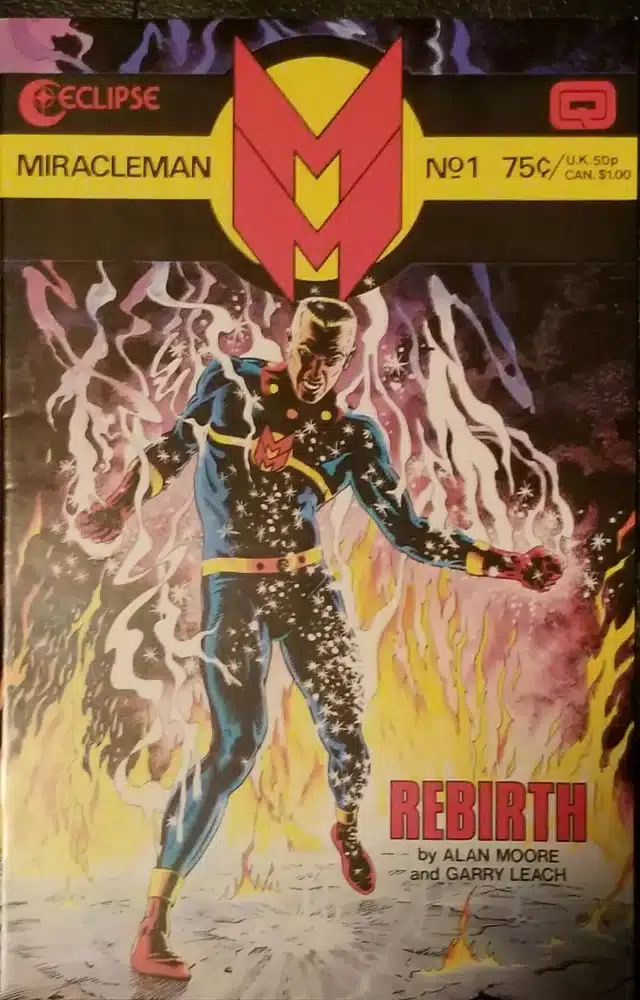
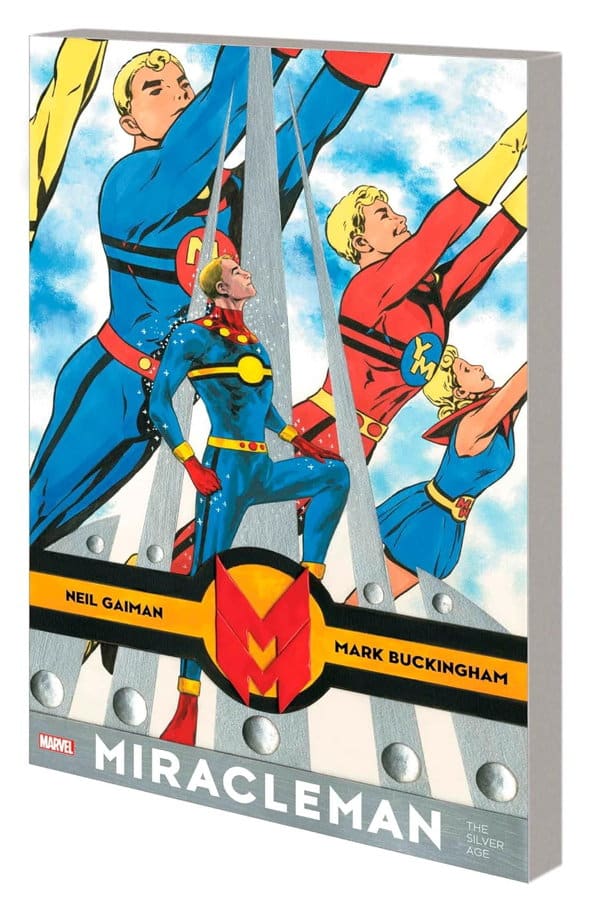
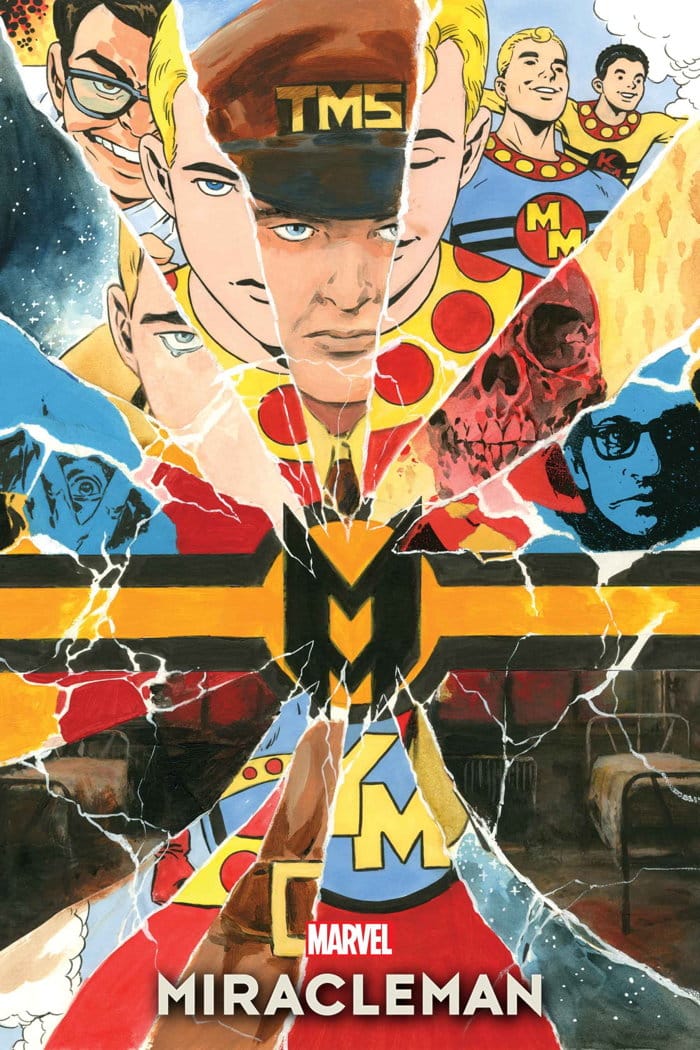
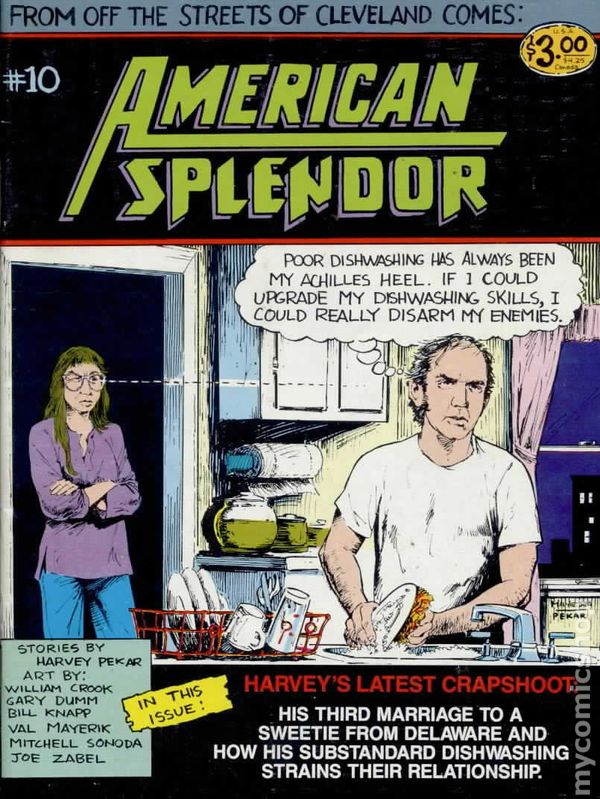



It’s been a while and memory is a liar but I remember when Marvel first brought back Miracleman, it was reprinted with horrible digital coloring and was also more expensive than other books on the market at the time. The dissonance of the modern coloring of a classic book was so off-putting that my own interest dropped below the price point, and I’m the target audience. Any time I hear about new Miracleman projects, I remember how awful that initial offering looked and decide not to pursue further.
Oh and the part in the press release about relettering also makes me want to avoid the book along similar line.
Well said!
Thanks, Heidi! What it comes down to is all things come and go. I found myself encouraging a young goth-dressed couple at a comic convention the other day to read Sandman. They’d never heard of it or Gaiman. I’m sure there are some fans in heaven that are very pleased I discovered and now enjoy reading Roy Crane’s Buz Sawyer (1943). The older I get the more I feel for The Sandman’s Hob Gadling, the human made immortal, and his gruff complaints about people and their short memories.
I agree re: coloring of the Miracle Man reprints. I’m sure this isn’t the driving factor (but thousand paper cuts etc etc). I disliked the new coloring so much, I tracked down the original Eclipse issues. I’m the target audience in many ways for Miracle Man…never read it, heard so much about it over the decades, and when it was finally re-released…it looked pretty rough.
Also…rebranding Miracle Man to “The Original Author” must hurt some too. Makes it have that much more friction to people who might be interested.
But overall…I’d probably agree that time is the biggest killer. What was innovative in the 80s is familiar now.
Never explained. Marvel started reprinting the series but before it could reach the finished but never published #25 they stopped. No reason given. Stopped for 5 years. At one point Neil Gaiman said there’d be an announcement at that year’s SD Comicon, and then nothing. Clearly Neil knows why they stopped but he won’t say. No one will say. Secrets in the industry generally aren’t that well kept but this one has been. Why? I’ve long believed that 40 years ago when Mick Anglo revived Marvelman because the character was in the public domain that he was telling the truth. It really was in the public domain for anyone to use. But while the Alan Moore version of Marvelman was then copyrighted, the 1950s version remained PD for anyone to exploit in their own way. I think that when Marvel Comics acquired the American Miracleman and paid Mick Anglo for the “rights”, they were paying him for something he didn’t actually own because Marvelman was lost to the public domain. It was nice that Mick was paid, but it didn’t mean anything. I think Marvel spent five years tying up loose ends so that no one could do their own version of Marvelman like Titan books is doing Conan comics under the title The Cimmerian. But Marvel won’t say, one way or the other.
Titan is not doing Conan comics under the title The Cimmerian. They are publishing Conan (old and new) under license from the rights holders, after Marvel dropped the license. You are thinking of Ablaze, that were reprinting translations in the US (in very small editions) of Conan titles originally published in France where the Conan property has gone PD.
Great read Heidi, thanks! Going to go read the issue of Dog Man now where does the dishes.
I’ve been reading Silver Age and it is phenomenal. Really one of the best books of last year. It may not be for everyone due to its subject matter and the need to read a bunch of stuff before it, but I thought it was amazing.
Same energy as why the Levitz/Giffen Legion of Super-Heroes books are all out of print, I think. For a stretch of time they were the bestselling comics and not only are they largely forgotten, so are the characters. The Earth kept spinning, the audience dwindled, and they lost their relevancy. I don’t think Miracleman or Legion are in the Tarzan category yet where it’s a dead brand, but probably midway.
I’d also say that Marvel did a historically bad job of promoting this book.
The first time Marvel Comics reprinted the first issue of Alan Moore’s Miracleman was March 2014. So we have had a full 10 years of reprints waiting for new material! Over that long of a period, it’s no wonder that many people have tuned out when new content was going to be available. This article is the first I’m hearing about new Miracleman content coming out in trade format.
Also it’s been a confusing mess of when new content for individual issues would be out. The last issue of Miracleman from Eclipse was issue #24 with a few black and white pages of issue #25 coming out years later. However, Marvel reset the counting with the Silver Age, so issue #1 was the old Eclipse issue #23. So then it was issue #3 of the Silver Age that we finally got caught up with the old issue #25. Then issue #4 was the first issue which was completely brand new and is what would have been issue #26.
It’s a big problem with Marvel trades, where various characters have multiple volume 1 and you have to look up online to figure out the reading order.
I know it seems crazy, but just between Marvel and DC they release something like 5 to 10 collections(including hardbacks and paperbacks) together almost every week, so I think retailers have become even more conservative on ordering this stuff, because it’s competing with the periodicals for dollars. I think it’s called market saturation, too many choices.
Back in 1980 when the direct market was just starting( for most of us located in the fly over states ) I was able to get a weeks worth of comics for about $5.00, now that buys just one comic. Also for the most part there were no collections being published( or if so only the best stories at the time ex: Dark Knight Returns got collected ).
I actually liked the new coloring (a lot of Eclipse’s coloring was rancid). But filling up the reprints with b&w 60s stories that had none of the charm of Binder & Beck, only serving to drive up the price point … did the series no favors at all (Moore’s withdrawal of his name, and the bowdlerisation of some naughtiness, didn’t help either). Those guaranteed that I, a fan of the original since its inception, had zero interest in the new series. Gaiman’s lack of commitment to the schedule was the final nail in the coffin.
We’re in a Renaissance of comics (rediscovered classics, new technologies, inspiration from other cultures), and, yes, there’s a glut of new stuff.
I visited numerous comics shops this weekend to score all of the FCBD titles, trying to be polite and buy something, but it wasn’t easy. And my tastes are eclectic! But so much I can read via the library, that there’s very little that justifies me spending money. I’ll recommend this title for the library, and promote it if necessary.
There’s a lot of stuff that appeals to general readers, but just like prose, it’s not easy to make that connection.
How do titles become “classics”? Miracleman is interesting among dystopian superheroes, in that the hero and utopia fail, similar to Squadron Supreme. Depending on how this ends, it might have something interesting to say about how society reacts to tragedy, and how society tries to correct that problem.
Schlimverbesserung… Making something worse by improvements (or Good Intentions).
We’ll see how many universities add this title to syllabi…
I’ve been a Marvelman/Miracleman since waaaaaaaaay back in the day. Sadly, I missed a couple of the issues when they first came out because they were very hard to find. After reading The Poisoned Chalice, I was happy to hear that Marvel had gotten the rights for Marvelman/Miracleman. Then, it just seemed nothing happened. And again, nothing happened. Then Marvel put out some other titles with variant covers that had Marvelman/Miracleman on the covers. And then trickle, trickle, trickle. Heidi said it best, Marvel just didn’t know what to do with Marvelman/Miracleman after they got him.
I agree that Marvel’s promotion of the series was really bad, but other factors contributed to it. The censored reprints (nobody wants to read reprints that are censored), the stop and start again of the announcements, I recall they published some Mick Angelo stories hyping them up when that wasn’t what people wanted. I think people who might have been interested in checking out what this hyped Miracle Man thing was, just tuned it out. Tell me when it’s actually out and if it’s any good – and Marvel published it and hasn’t gotten the word out yet.
Having read the new Gaiman/Buckingham Miracle Man I can tell you it’s super fantastic and has a special magic to it. People are missing out on one of the best comics being published right now. I hope when people get to read it, word of mouth will get others to pick it up.
If anybody at Marvel wants to know why they aren’t doing so well in the book market, having Neil freaking Gaiman, a writer other publishers would kill to have and not promoting his work to the moon to the book market (let alone the comic market) is exhibit A of why they fail as a publisher.
This belonged at DC, there is no possible way to explain Comic Book readers, buying habits. But Gaiman is a DC writer, sometimes writers become so identified with one company or the other. I know Heidi likes to think otherwise. But as someone that as owned a store since 1988, 50% of my Marvel subscribers will not go near DC and vice-versa. Even comic book journalism (since the internet) has become very “”Team” orientated. Bleeding Cool is “Team-Marvel”.
When Marvel purchased Miracleman, they should have had a one volume Alan Moore collection on shelves ASAP. It took over a decade for that to come, and when it did, it was an overpriced “omnibus” that was over 50% “supplemental” material.
Like a lot of people, I put much of the waning interest in Miracleman to Marvel’s mishandling of the property — their desire to milk every penny out of the property by releasing the issues as individual comics stuffed with older material that no one asked for was a colossal mistake. One or two volumes of the Moore run to prime the pump, and then start releasing the Gaiman/Buckingham version once it was ready. When the whole story existed, it was impossible to justify releasing it in individual issues. Readers saw it as the transparent cash grab that it was, and stayed away. And as they stayed away, the property cooled.
Though I think Johanna and Mike and you are also correct that in many ways, its time has passed.
That said, I read the Gaiman/Buckingham Silver Age issues a few days ago, and they really are great! Buckingham’s art, in particular, is a pleasure.
It also occurs to me that, even for Gaiman’s built-in audience, they might not be up for a story he’s continuing from somebody else. The Alan Moore name — if it were allowed to be published in the credits — carries a lot of weight with comic readers of a certain generation. But to younger generations, the passing of the torch (and the storytelling reins) from Moore to Gaiman might not seem as natural as it was for those of us who were there when it happened. And Gaiman fans might not be keen on wading through 16 issues of Not Gaiman before getting to what they presume to be the Good Stuff.
My frustration is they put this out in a paperback. No pretense of doing a hardcover first. So I have four volumes in hardcover, and then this thing in paperback. Maddening.
As for your other points, the lack of availability for years was part of its appeal. Sort of like Cowboy Wally was at once point (UseNet!). If it was optioned for a tv show/movie I’m sure interest would spike, but gods knows what the media rights for this must look like.
One last thing, during the peak mania at wanting to read even the original trades, which were out of print, I sold them for a tidy sum on eBay and bought my girlfriend (now wife) an engagement ring with the proceeds. That was about 22 years ago, so that worked out well. Thanks Miracleman!
Marvel were probably the worst people on the planet to handle a project like this
These are many thoughtful observations about the publishing, printing, and other mechanics involve din producing MIracleman. I agree with much that haas been posted. But what about the story itself?
Here’s my perspective. Heidi asks: “Does Miracleman matter anymore, or has it been left behind by so many similar deconstructed superhero comics?” I think the answer lies within the Miracleman character himself, and to a lesser degree with his engaging supporting cast. Miracleman is proud, noble, loving… but he is also new at being omnipotent, and he struggles with profound doubts. That character is intriguing, and has unfortunately been relegated to the background in Gaiman’s stories so far. Miracleman is what will make Miracleman matter, if and when “The Dark Age” is published.
Moore’s ending for Marvelman was intended to be as ‘definite but tantalizing’ as Watchmen’s. Any continuation of it, regardless of the talents involved (and truth is, I’ve always had mixed feelings about Gaiman), is both very belated and ultimately redundant.
After finishing the Silver Age I felt this book really was a product from the 90s and Gaiman didn’t really find much new stuff to say about it. Alan Moore already explored everything there was to say about it. Gaiman can do the Dark age but I believe the character would be better served by a reboot with a new creative team.
Keep the Moore/ Gaiman comics separate for fans of the series and completists but I can’t see it bringing new audiences to the character.
Honestly I bought this book originally for Alan Moore’s writing. I didn’t care for Gaiman’s take and stopped buying single issues shortly after Moore left. Read the rest later, didn’t like it. Tried other Gaiman books over the years. didn’t like his version of Black Orchid, Sandman is meh (except Death, but that’s because of Chris Bachalo), Books of Magic was all right at first but aimless meandering, don’t get me started on Shade. American Gods is just awful pretentious philosophical wanking. Clearly he was hype in the early 90s, but now ?
…isn’t marvel generally a trade first publisher these days? The majority of their HCs are bigger collections that include the contents of two trades.
Now, it’s obviously different since (I think) the Silver Age is completed. But I still expect an HC at a later point.
And, just to show agreement with everyone else, “at a later point” is what killed interest in this book. It took a decade or more to get here. Marvel completely botched it. And Neil, well, he never seems to be in a hurry with anything.